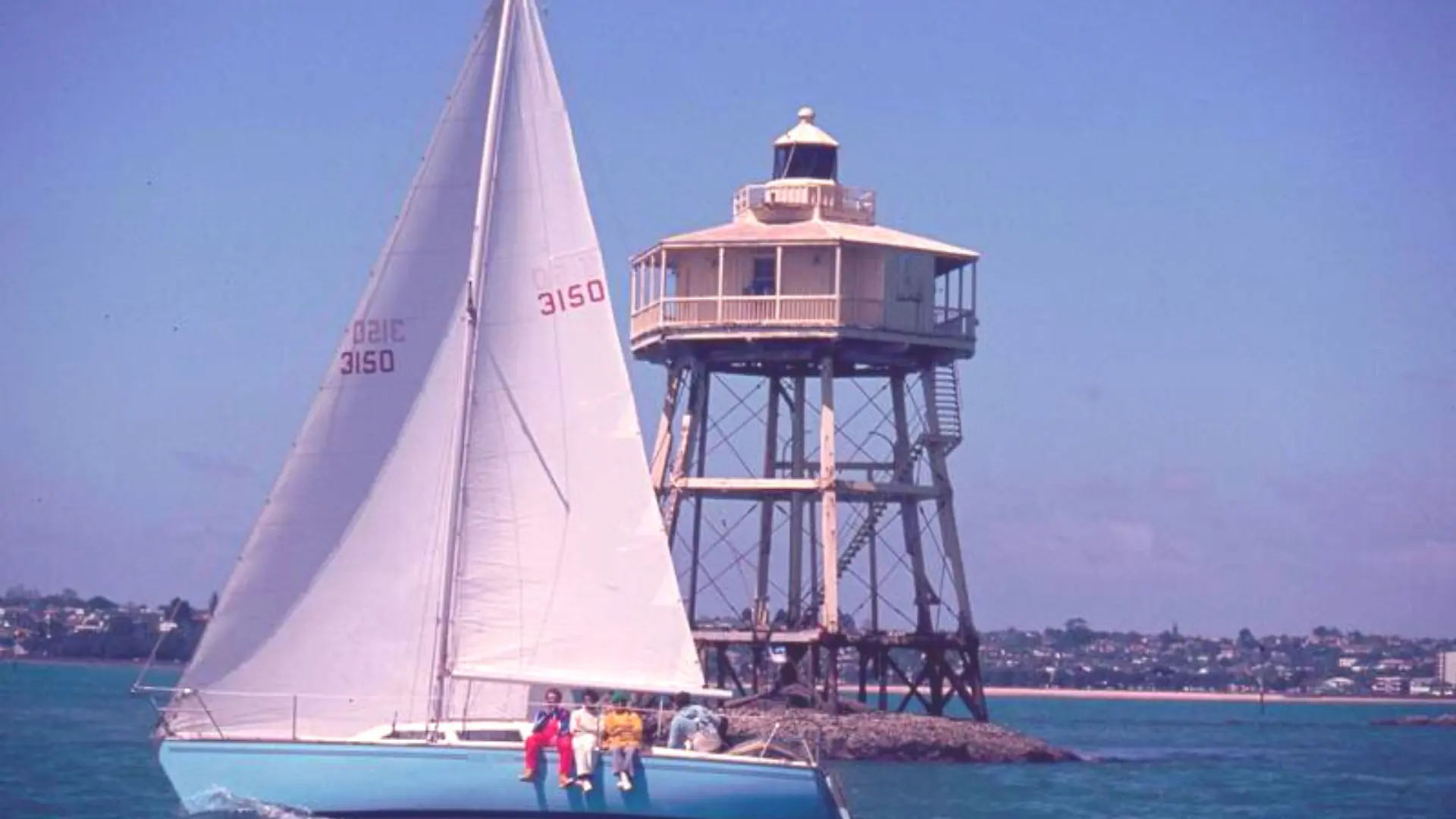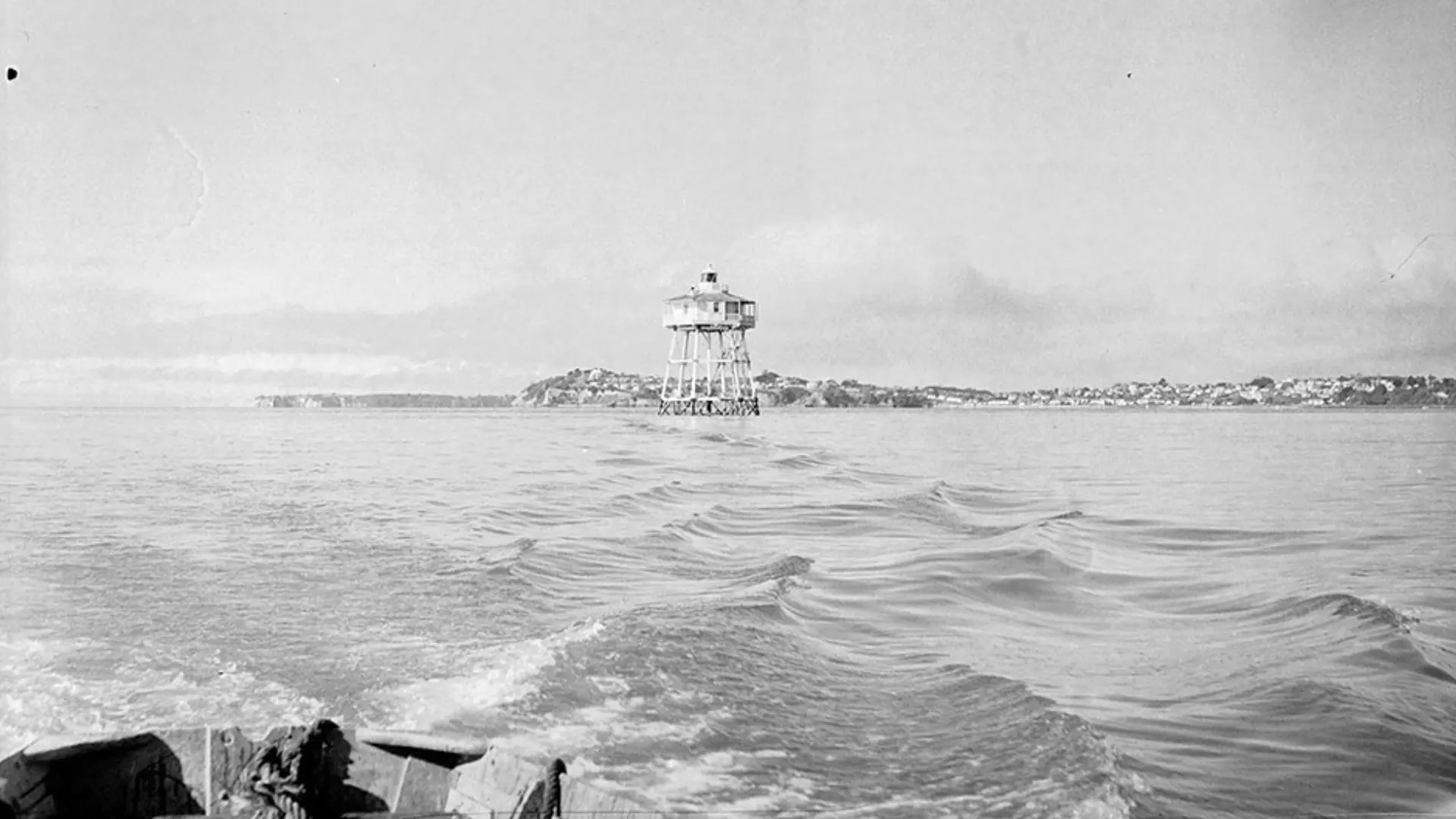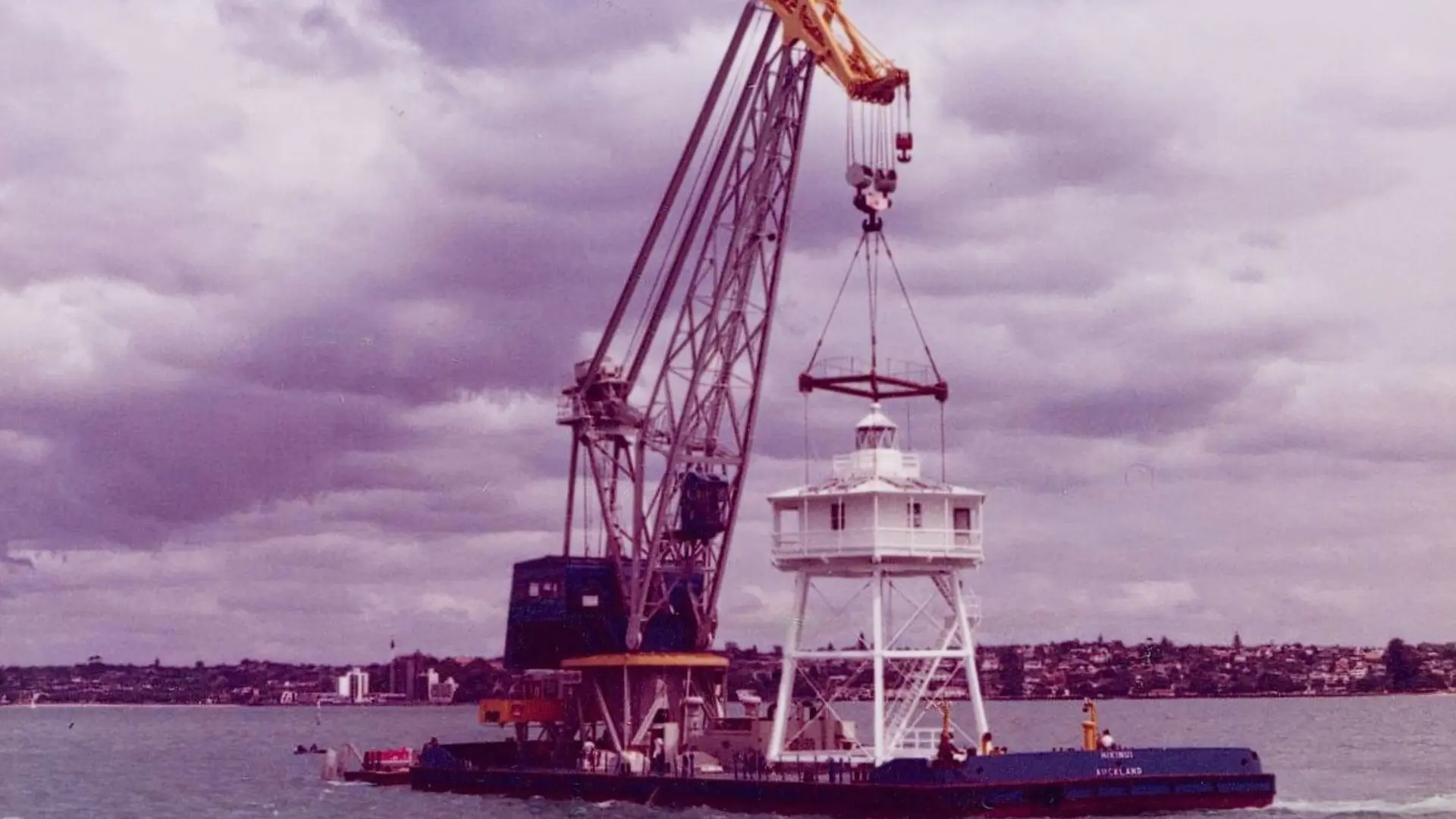The design
James Stewart went for a hexagonal design, based on a beehive. Three horizontal wooden platforms sat on concrete floors. The guttering of the galvanised iron roof projected outward to form a verandah around all eight sides. Inside, there was a living room, a bedroom, and storerooms. A 400-gallon tank held fresh water. There was also a toilet, flushed with sea water. The structure was held up by seven castiron pillars, driven deep into rock, and placed in concrete foundations. Stewart’s method of concreting was reported as ingenious, and a first in the southern hemisphere.
The fuel
In 1871 the light was powered by a kerosene lamp of 350 candlepower. It was converted to solar power in the 1990s.
High maintenance
In 1871, Bean Rock Lighthouse was equipped with the following:
- A set of copper oil measures, quart, pint & gill
- 1 oil measure tray
- 1 oil funnel
- 4 pairs of lamp scissors
- 12 lamp glass brushes
- 10 gross wicks
- 12 fine chamois skins – 24 linen rubbers – 24 woollen rubbers
- 4lbs rouge in japanned tin case. 10lbs rotten stone in japanned tin case
- 2 pieces of sponge. 4 feather dusters
- 2 pairs flat plyers – 2 pairs cutting plyers – 2 pairs nippers – 2 spirit levels – 1 glazier’s diamond – 2 putty knives – 2 soldering bolts – 4lbs tin solder – 4lb resin
- 1 small hand lantern.
As well, each of the Bean Rock’s three lamps came with four hand brushes or dusters, two dust shovels, and six scrubbing brushes.
Renovations
In 1985 the cottage, with its four diminutive rooms and narrow hexagonal verandah was removed for restoration work. The base’s rotted kauri legs were replaced by Australian hardwood jarrah, and sunk in new concrete foundations. The cottage was winched back into place.



